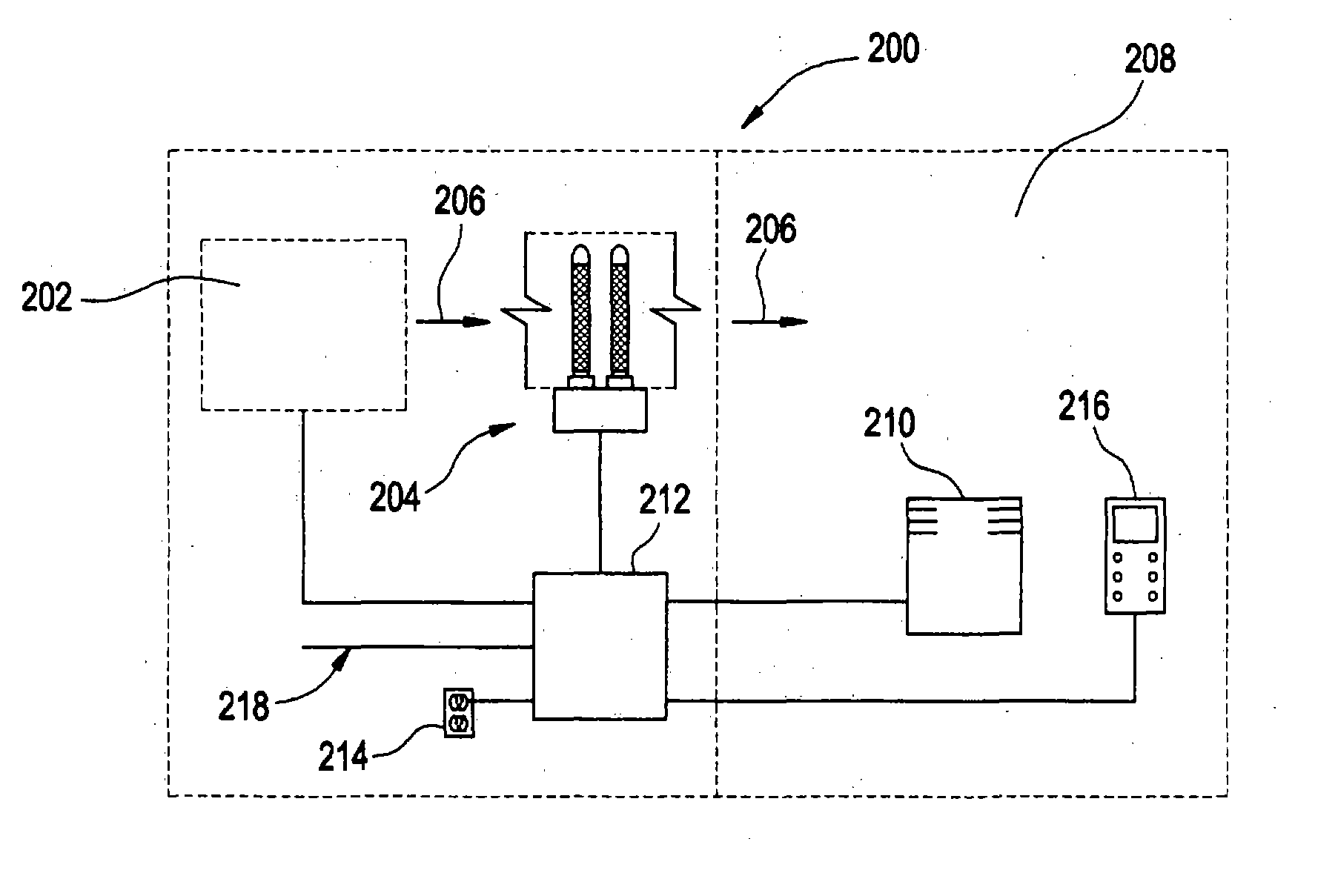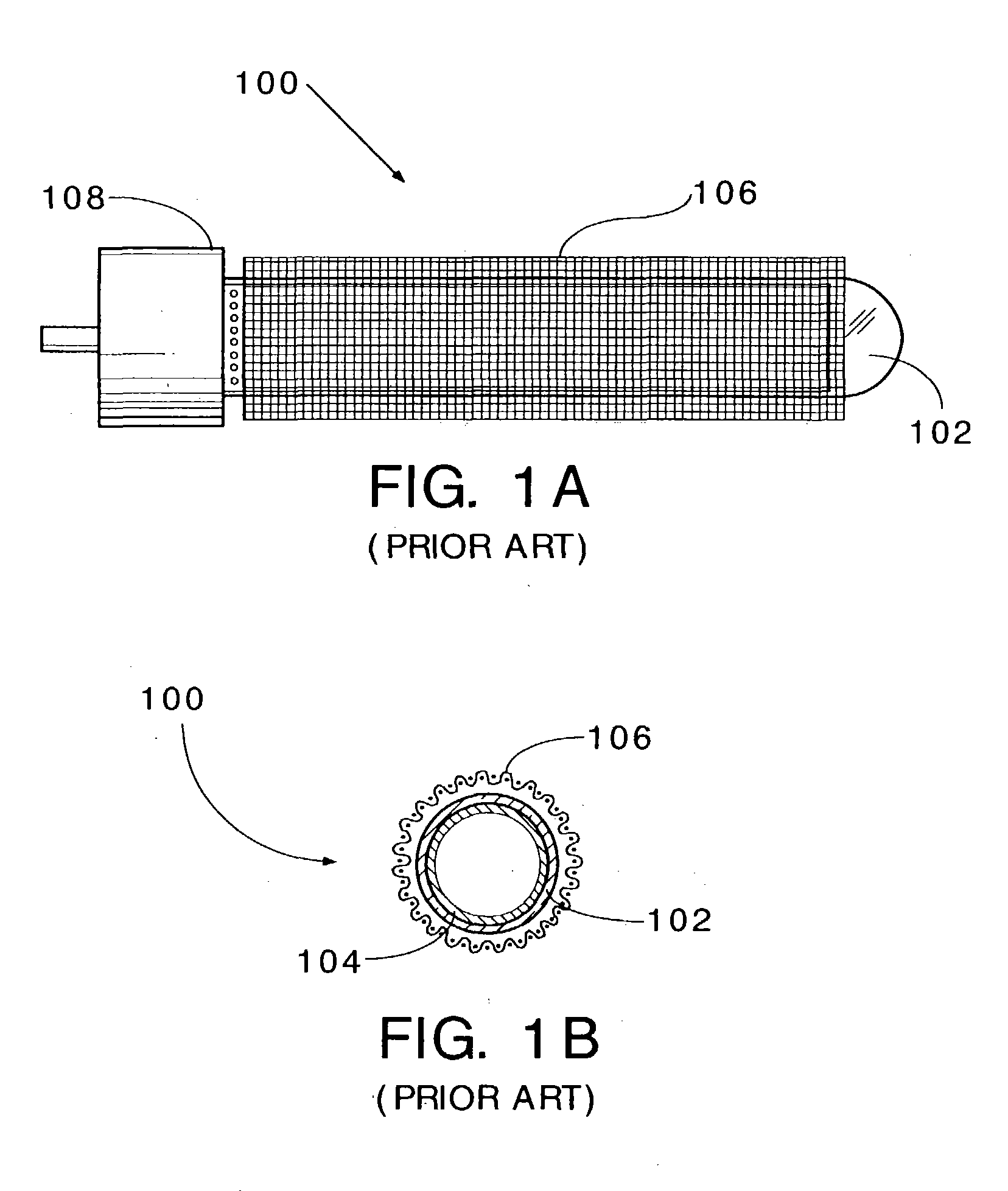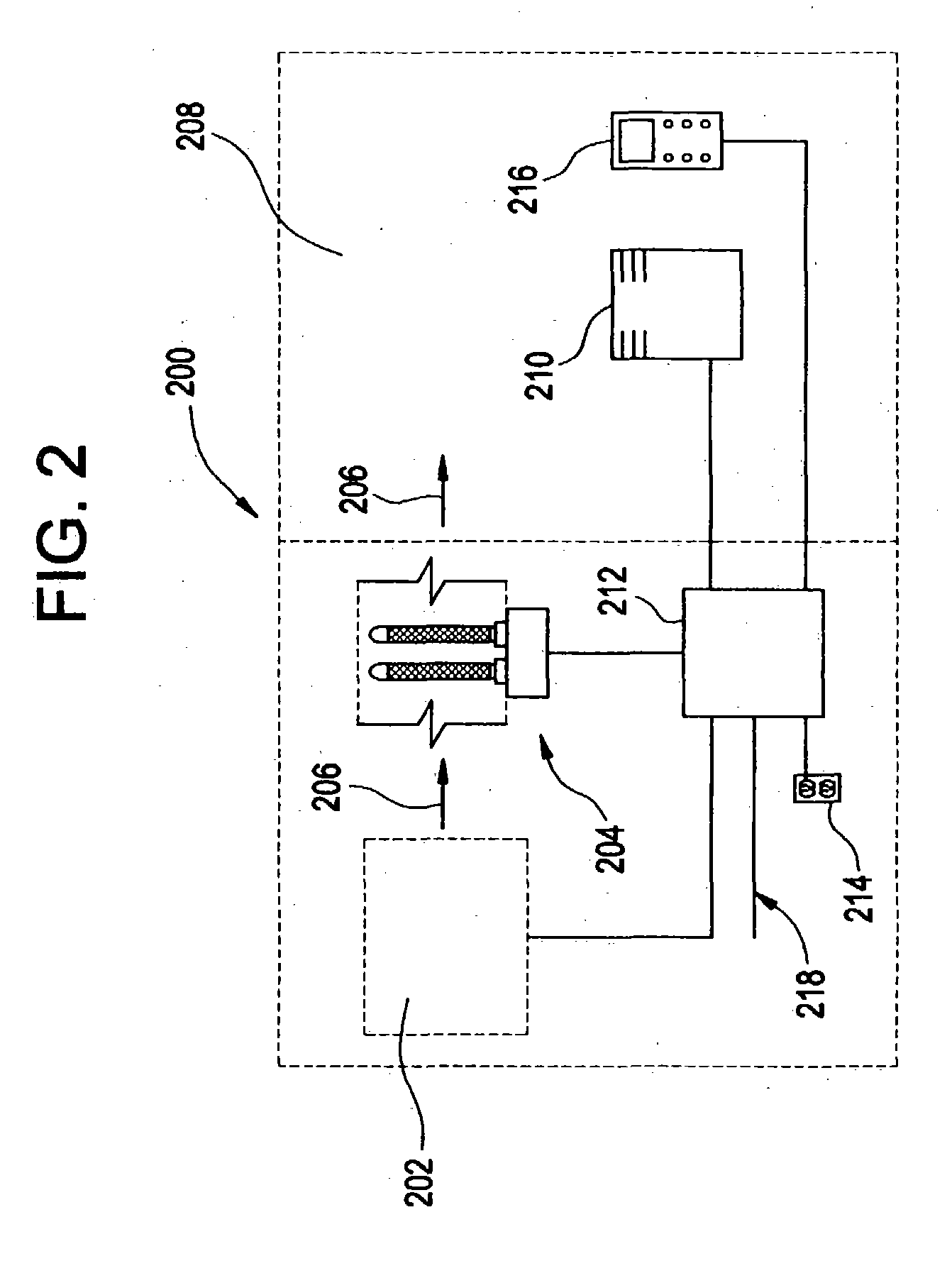Air ionization control
a technology of air ionization and control, which is applied in the direction of lighting and heating apparatus, heating types, transportation and packaging, etc., can solve the problems of increasing the level of ionization, increasing the amount of ionization, so as to achieve the effect of reducing the amount of ozone, and avoiding excess ozon
- Summary
- Abstract
- Description
- Claims
- Application Information
AI Technical Summary
Benefits of technology
Problems solved by technology
Method used
Image
Examples
examples
[0026]FIGS. 2-6 illustrate an example of an air ionization system of the present invention. FIG. 2 shows a diagram of and embodiment of the air ionization system 200 as it might be utilized in conjunction with a heating / air-conditioning system (“HVAC”) 202 as is typically found in residential building, commercial buildings, and institutional buildings. Generally, the air ionizer 204 is placed in the ductwork of the HVAC system such that the air flowing through the ductwork is ionized during operation of the air ionization system. In FIG. 2, the arrows 206 indicate the airflow from the HVAC system 202 into a room 208. An IAQ monitor 210, comprising one or more sensors in accordance with the present invention, is placed inside the room 208. The sensors in the IAQ monitor 210 determine various levels of contaminants in the air and send signals corresponding to the determined levels to the control unit 212. The control unit 212 is electrically connected to the power source 214 such that...
PUM
| Property | Measurement | Unit |
|---|---|---|
| electric alternating voltage | aaaaa | aaaaa |
| size | aaaaa | aaaaa |
| size | aaaaa | aaaaa |
Abstract
Description
Claims
Application Information
 Login to View More
Login to View More - R&D
- Intellectual Property
- Life Sciences
- Materials
- Tech Scout
- Unparalleled Data Quality
- Higher Quality Content
- 60% Fewer Hallucinations
Browse by: Latest US Patents, China's latest patents, Technical Efficacy Thesaurus, Application Domain, Technology Topic, Popular Technical Reports.
© 2025 PatSnap. All rights reserved.Legal|Privacy policy|Modern Slavery Act Transparency Statement|Sitemap|About US| Contact US: help@patsnap.com



